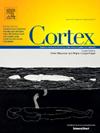They look virtually the same: Extraretinal representation of symmetry in virtual reality
IF 3.3
2区 心理学
Q1 BEHAVIORAL SCIENCES
引用次数: 0
Abstract
The brain must identify objects from different viewpoints that change the retinal image. This study examined the conditions under which the brain spends computational resources to construct view-invariant, extraretinal representations in a 3D virtual environment. We focused on extraretinal representation of visual symmetry. Visual symmetry activates the extrastriate visual cortex and generates an Event Related Potential (ERP) called Sustained Posterior Negativity (SPN). Amplitude is lower for symmetrical compared to asymmetrical stimuli at posterior electrodes. Given a symmetric pattern on a plane, regularity in the retinal image is degraded by perspective. Previous studies have found that the SPN is selectively reduced for perspective symmetry – we term this perspective cost. This cost may be reduced when sufficient visual cues are available to support view invariance. To explore this, we used a VR-based 3D environment. Forty-eight participants completed 2 tasks, discriminating stimulus regularity (symmetry or asymmetry) and discriminating stimulus luminance (light or dark). We computed perspective cost as the difference between frontoparallel and perspective SPN. In the Regularity task, perspective cost was significantly <.35 μV – our a priori definition of a small SPN modulation, indicating no perspective cost. The results from the Luminance task were less clear. SPN cost was not significantly more than 0 μV, but not significantly less than .35 μV. We conclude that the extrastriate cortex can construct extraretinal representations of symmetry when sufficient visual depth cues are available. This certainly happens during regularity discrimination and may happen automatically during luminance discrimination.
它们看起来几乎是一样的:在虚拟现实中对称的超视觉表现
大脑必须从不同的角度识别物体,从而改变视网膜图像。这项研究考察了大脑在3D虚拟环境中花费计算资源来构建视觉不变、视网膜外表征的条件。我们专注于视觉对称的视网膜外表征。视觉对称激活层外视觉皮层,产生事件相关电位(ERP),称为持续后向负性电位(SPN)。相对于后电极的非对称刺激,对称刺激的振幅较低。给定一个平面上的对称图案,视网膜图像的规律性会因透视而降低。先前的研究发现,SPN会选择性地减少透视对称——我们称之为透视成本。如果有足够的视觉提示来支持视图不变性,则可以减少此成本。为了探索这一点,我们使用了基于vr的3D环境。48名参与者完成了辨别刺激规律(对称或不对称)和辨别刺激亮度(亮或暗)两项任务。我们将视角成本计算为前沿平行和视角SPN之间的差异。在规则任务中,视角成本显著<;35 μV -这是一个小SPN调制的先验定义,表明没有透视成本。亮度任务的结果不太清楚。SPN成本不显著大于0 μV,但不显著小于0.35 μV。我们的结论是,当有足够的视觉深度线索时,层外皮层可以构建对称的层外表征。这当然发生在规律判别过程中,也可能在亮度判别过程中自动发生。
本文章由计算机程序翻译,如有差异,请以英文原文为准。
求助全文
约1分钟内获得全文
求助全文
来源期刊

Cortex
医学-行为科学
CiteScore
7.00
自引率
5.60%
发文量
250
审稿时长
74 days
期刊介绍:
CORTEX is an international journal devoted to the study of cognition and of the relationship between the nervous system and mental processes, particularly as these are reflected in the behaviour of patients with acquired brain lesions, normal volunteers, children with typical and atypical development, and in the activation of brain regions and systems as recorded by functional neuroimaging techniques. It was founded in 1964 by Ennio De Renzi.
 求助内容:
求助内容: 应助结果提醒方式:
应助结果提醒方式:


